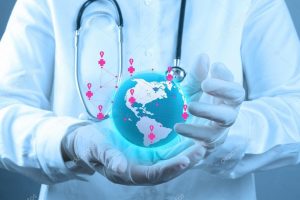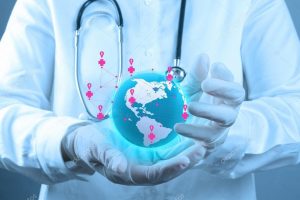
Medical texts: the art of translating the complex
Edited by: TDX PERU SAC
Source:
- Malcolm Marsh Algunas consideraciones sobre la traducción médica
Centro virtual Cervantes: https://cvc.cervantes.es/lengua/aproximaciones/marsh.htm
Date: 25/09/2019

When we talk about the universe of medicine, we don’t talk about a single field but about a wide range of closely related areas and related disciplines. The main areas of modern medicine are:
- biochemistry
- surgery
- dermatology
- endocrinology
- pharmacology
- physiology
- genetics
- geriatrics
- hematology
- immunology
- microbiology
- gynecology
- odontology
- ophthalmology
- pathology
- pediatrics
- psychiatry
- neurology
- radiology
- urology
his is why medical terminology encompasses words from disciplines such as biochemistry or microbiology as well as the name of equipment, often of advanced technology, used in the clinical laboratory or in hospital therapeutics. Similarly, concepts and techniques of biostatistics and research methodology appear in a high percentage of medical articles, especially in longitudinal and / or cross-sectional clinical studies.
Mastering the translation of these terms in different languages could be a difficult challenge for the translator, however we will see that this may not be the case. Most of the specific terms of medicine are based on Latin and Greek ethics, which are studied by those who carry out a linguistic training such as translators. A cursory look at any bilingual dictionary will confirm this statement. So in most cases it would be enough to become familiar with basic morphological knowledge and have a specialized medical dictionary to carry out the translation of a medical text.
Although the terminology could, theoretically, not be an obstacle to carry out a medical translation; the truth is that many difficulties can arise along the way.
Some difficulties are linked to common mistakes in the translation of technical texts. In languages such as English it is preferred that the technical texts be concise, that is, of short sentences, where the use of the passive voice predominates and the number of prepositions, articles and connectors is limited; unlike languages like Spanish where the sentences are usually longer, sometimes separated by semicolons to achieve pauses, and the use of connectors is more accepted.
However, there are difficulties in translation that are typical of medical texts. One of these is related to false friends or false friends. False friends are words or expressions of a foreign language that are very similar in form, but not in meaning, to other words in their own language. This creates confusion and could lead to the use of erroneous terms in a translation. Some examples that occur in the medical universe when translating from English to Spanish are:
- abortus: wrong: aborto / right: feto no viable
- constipated: wrong: constipado / right: estreñido
- disorder: wrong: desorden / right: alteración, trastorno o enfermedad
- drug: wrong: droga (addictive substance) / right: medicamento, fármaco, o sustancia farmacéutica
- fatal: wrong: fatal / right: mortal
- labour: wrong: labor / right: parto (en obstetricia)
- sane: wrong sano / right: cuerdo o sensato
- topic: wrong: tópico (uso local o externo) / right: asunto, materia o tema
Other difficulties inherent in the translation of medical texts are related to the social and cultural differences of two linguistic communities: that of the language of origin of the text and that of the language to which one wishes to translate. For example, some articles mention medications under their trade names, but such drugs are not registered under that brand in other countries, so it is important to investigate the generic composition of these drugs. Another situation that could occur is when it refers to units of measurement that are not used in other communities; This occurs with units such as inches, feet or degrees Fahrenheit, widely used in North America, but rarely used in the rest of the world. Finally, there are terms that emerged from English, as the favorite language of the scientific world and whose use has been massively extended by what has become medical anglicisms. Terms such as score or gold standard used in clinical analysis, or rash to refer to allergic symptoms, are best accepted in their original language by the medical community.
For the above, the translation of medical texts is a challenge for technical translators; however, constant training and practice makes the translator improve the quality of his translations. The translation of medical information is of vital importance for the dissemination of new advances and policies for the benefit of the population’s health.


